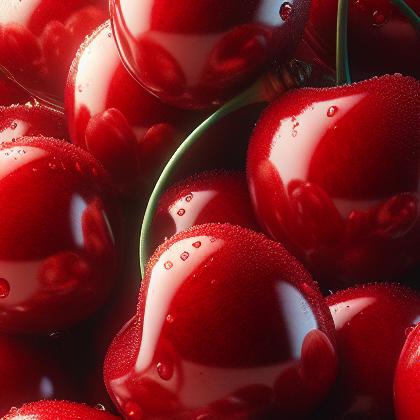Showing results for 'Sweet cherry'
close
Sweet Cherry

The Cherry is the fruit of many plants of the genus Prunus, and is a fleshy drupe (stone fruit). The cherry fruits of commerce are usually obtained from a limited number of species such as cultivars of the sweet cherry, Prunus avium. The name 'cherry' also refers to the cherry tree, and is sometimes applied to almonds and visually similar flowering trees in the genus Prunus, as in "ornamental cherry", "cherry blossom", etc. Wild Cherry may refer to any of the cherry species growing outside of cultivation, although Prunus avium is often referred to specifically by the name "wild cherry" in the British Isles.

Did you know there are 50 food flavor pairings in my database for Sweet Cherry available. What you are seeing above is a random list of 30 items which pair with Sweet Cherry.
For the entire list, beautifully formatted, enter your email address and click the download button below, then I'll email it to you as a PDF.
Sweet cherry Properties:
| Food Property | Type | Description |
|---|---|---|
| Flavor Profile | Sweet | Sweet cherries have a naturally sweet taste with a pleasant fruity flavor. |
| Sour | Sweet cherries may have a hint of sourness, but it is typically overwhelmed by their sweetness. | |
| Texture | Firmness | Sweet cherries have a firm texture, making them ideal for eating whole or adding to dishes. |
| Tenderness | While firm, sweet cherries also have a tender flesh that is easy to bite into. | |
| Nutritional Value | Macronutrients | Sweet cherries are a good source of carbohydrates and provide energy. |
| Micronutrients | Sweet cherries are rich in vitamins and minerals, such as vitamin C and potassium. | |
| Fiber | Sweet cherries contain dietary fiber, which is important for digestive health. | |
| Color | Natural Pigments | Sweet cherries have a deep red color due to the presence of natural pigments like anthocyanins. |
| Aroma | Volatile Compounds | Sweet cherries have a pleasant aroma, thanks to volatile compounds present in their skin and flesh. |
Food Pairing App - Version 1.2.0
